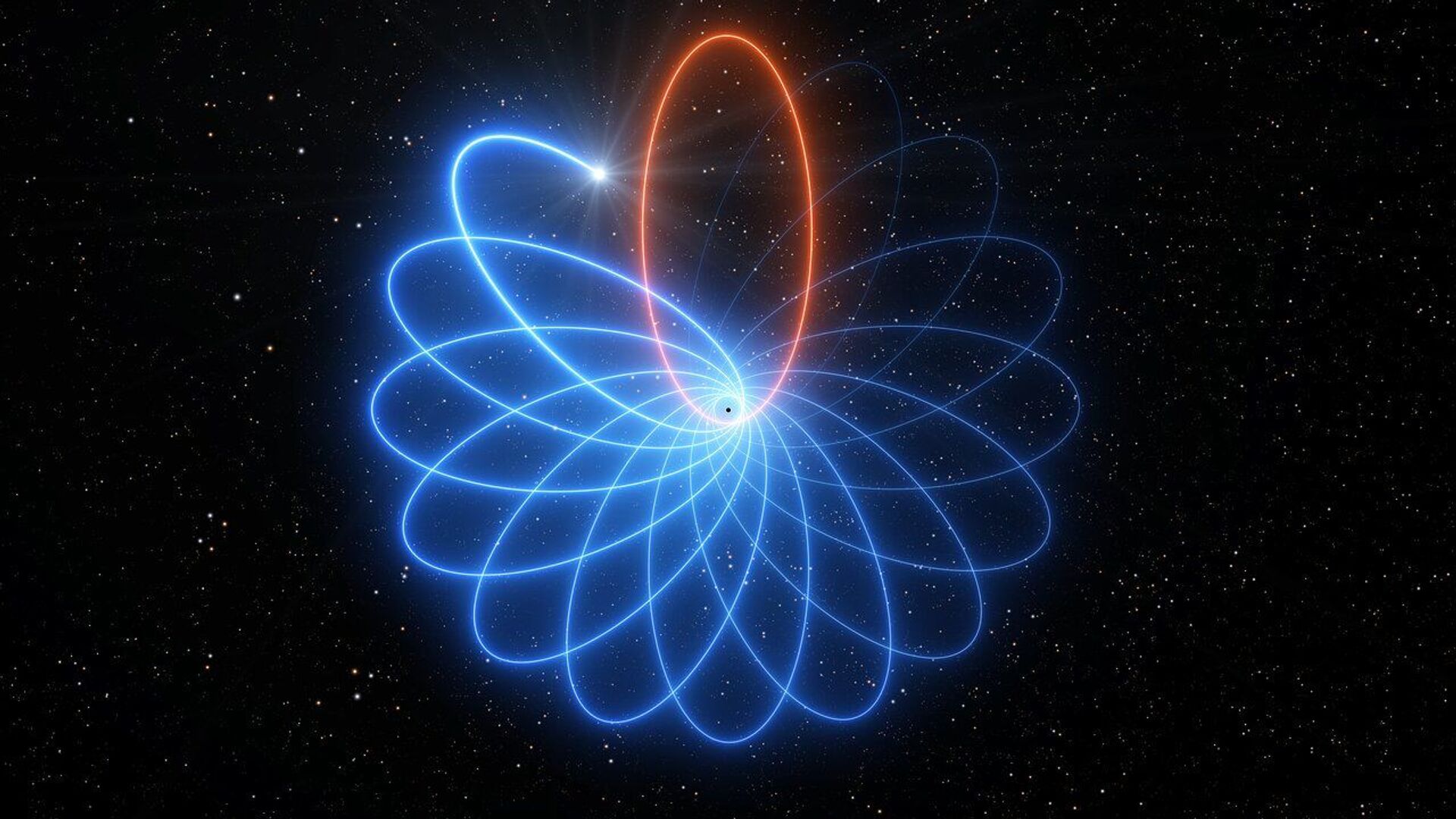https://sputnikglobe.com/20211215/new-findings-from-vlti-support-albert-einsteins-general-theory-of-relativity-1091555063.html
New Findings From VLTI Support Albert Einstein's General Theory of Relativity
New Findings From VLTI Support Albert Einstein's General Theory of Relativity
Sputnik International
One of the world’s most powerful telescopes has given astronomers and physicists their best-ever look at Sagittarius A*, the massive black hole at the center... 15.12.2021, Sputnik International
2021-12-15T22:34+0000
2021-12-15T22:34+0000
2022-11-03T19:34+0000
very large telescope
science & tech
milky way
https://cdn1.img.sputnikglobe.com/img/107899/12/1078991207_0:24:1280:744_1920x0_80_0_0_a36e61b2c09343e636e60ae2ce2b7d32.jpg
The images were captured at the European Southern Observatory in Chile by the Very Large Telescope Interferometer (VLTI).An estimated 27,000 light-years away, Sagittarius A* sits at the center of the Milky Way galaxy, the galaxy our solar system calls home. Through imaging, Reinhard Genzel, director at the Max Planck Institute for Extraterrestrial Physics in Germany, believes that new astrophysical mysteries can be unlocked.The VLTI uses four primary telescopes and four auxiliary telescopes to detect objects four billion times fainter than what can be seen by the naked eye. Using an instrument called GRAVITY, light from the telescopes is combined to create images 20 times as sharp as what one of the telescopes in the array can produce.New images have revealed a previously undiscovered star, S300, and the discovery has allowed astronomers to track the movements of the celestial bodies, revealing the closest approach a star, S29, has made to Sagittarius A*.The new images again put Albert Einstein’s general theory of relativity to the test.According to the team of researchers, the new data confirms that the stars behave just as Einstein’s General Theory of Relativity predicts.Up next for the VLTI and its team of researchers is to document how fast Sagittarius A* is spinning.
milky way
Sputnik International
feedback@sputniknews.com
+74956456601
MIA „Rosiya Segodnya“
2021
News
en_EN
Sputnik International
feedback@sputniknews.com
+74956456601
MIA „Rosiya Segodnya“
Sputnik International
feedback@sputniknews.com
+74956456601
MIA „Rosiya Segodnya“
albert einstein, vlti, theory of relativity, telescope, sagittarius a,
albert einstein, vlti, theory of relativity, telescope, sagittarius a,
New Findings From VLTI Support Albert Einstein's General Theory of Relativity
22:34 GMT 15.12.2021 (Updated: 19:34 GMT 03.11.2022) One of the world’s most powerful telescopes has given astronomers and physicists their best-ever look at Sagittarius A*, the massive black hole at the center of the Milky Way galaxy, helping them to unlock new mysteries of the cosmos and Einstein's general theory of relativity.
The images were captured at the European Southern Observatory in Chile by the Very Large Telescope Interferometer (VLTI).
An estimated 27,000 light-years away, Sagittarius A* sits at the center of the Milky Way galaxy, the galaxy our solar system calls home. Through imaging, Reinhard Genzel, director at the Max Planck Institute for Extraterrestrial Physics in Germany, believes that new astrophysical mysteries can be unlocked.
Genzel said in a statement, “We want to learn more about the black hole at the centre of the Milky Way, Sagittarius A*: How massive is it exactly? Does it rotate? Do stars around it behave exactly as we expect from Einstein’s general theory of relativity? The best way to answer these questions is to follow stars on orbits close to the supermassive black hole. And here we demonstrate that we can do that to a higher precision than ever before.”
The VLTI uses four primary telescopes and four auxiliary telescopes to detect objects four billion times fainter than what can be seen by the naked eye. Using an instrument called GRAVITY, light from the telescopes is combined to create images 20 times as sharp as what one of the telescopes in the array can produce.
New images have revealed a previously undiscovered star, S300, and the discovery has allowed astronomers to track the movements of the celestial bodies, revealing the closest approach a star, S29, has made to Sagittarius A*.
The new images again put Albert Einstein’s general theory of relativity to the test.
Genzel said, “Following stars on close orbits around Sagittarius A* allows us to precisely probe the gravitational field around the closest massive black hole to Earth, to test General Relativity, and to determine the properties of the black hole.”
According to the team of researchers, the new data confirms that the stars behave just as Einstein’s General Theory of Relativity predicts.
Up next for the VLTI and its team of researchers is to document how fast Sagittarius A* is spinning.



